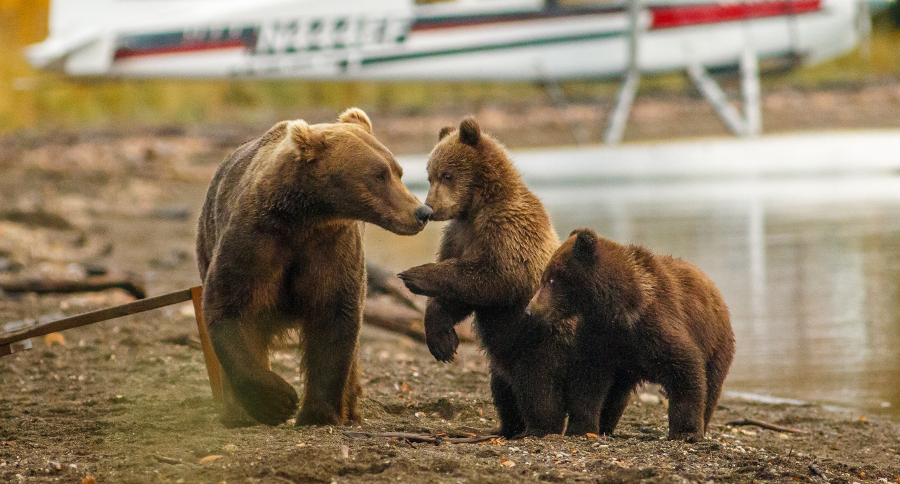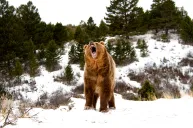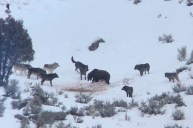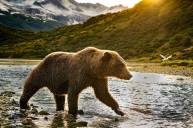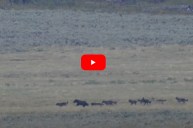Here are answers to your burning questions about grizzly bears.
Throughout the United States and Canada, no animal is probably more feared than the grizzly bear, aka: Ursus arctos horribilis or simply. Technically, this animal is a subspecies of brown bear. These animals grow to great size and sighting one up close can be a frightening experience.
Many people have questions about the grizzly bear's diet. What DO these large North American predators eat? Are humans on the menu?
We will attempt to answer some of the Internet's most burning questions about these often-misunderstood animals.
What do grizzly bears eat?
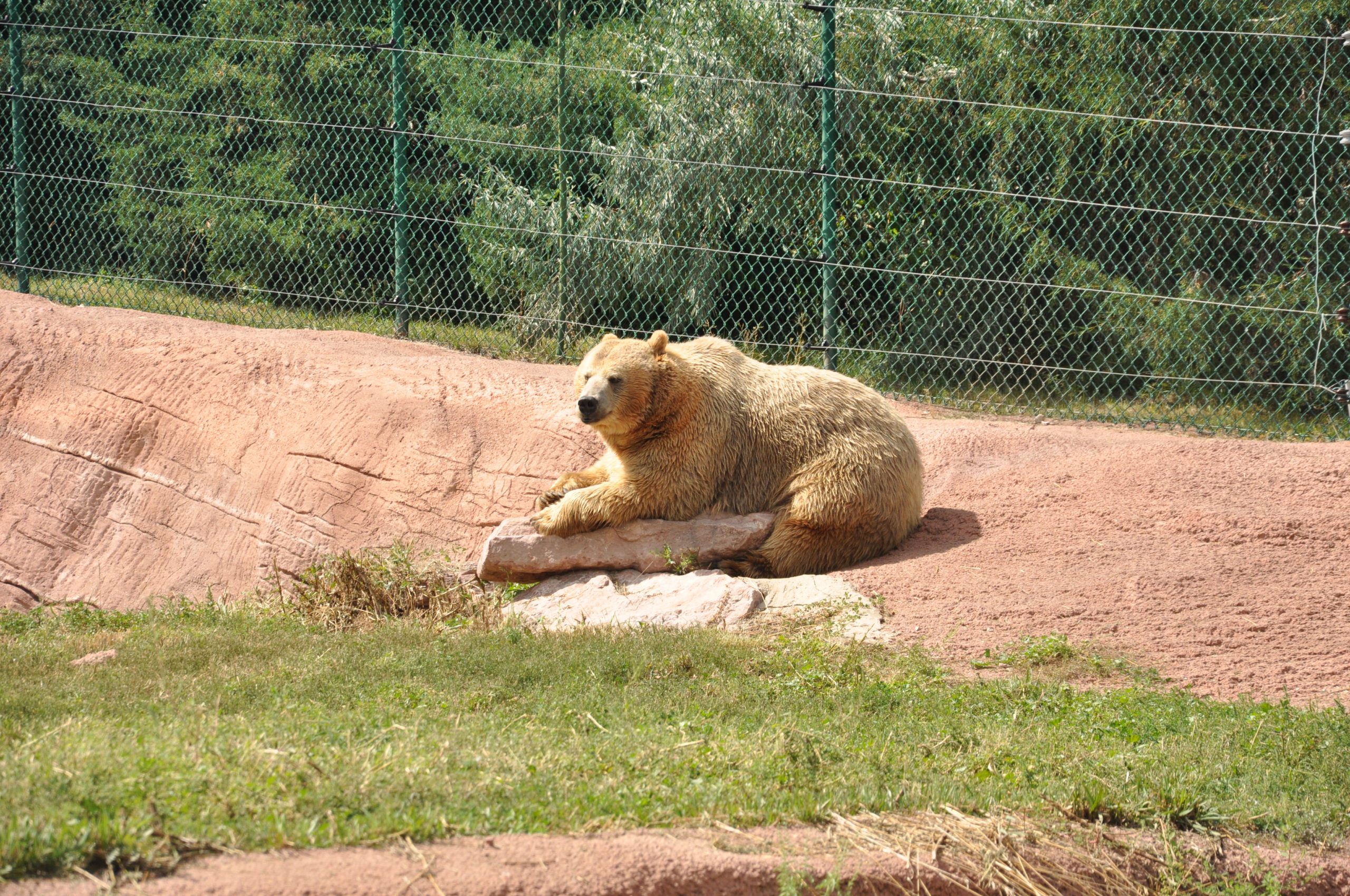
Travis Smola
It might be easier to answer this question by asking 'What don't they eat?' Grizzly bears are largely thought of as strictly carnivores, but they are omnivores most of the year. Many people are surprised to learn that one of the first things bears do after hibernation is to graze on grass because other food sources might be scarce early in the year.
Deer, elk, moose and bison make up a large portion of the grizzly bear's meat diet. While they are capable of hunting, they are also opportunistic scavengers who won't hesitate to munch on carrion left behind from other predators. Many bears will also go for easy prey items like fawns, ground squirrels, marmots, mice and more. Cannibalism isn't a problem. In some instances, they'll even snatch other bear cubs, especially from black bears. They tend to go after young and old animals rather than healthy adults when they're on the hunt for some serious protein.
Most people have seen photos of grizzlies fishing in Alaska. Fish are an important food to most grizzlies. Bears love to eat spawning trout, but they'll eat a variety of other fish species too if they can catch them. They'll also sometimes eat clams and other sea life if they can find it. Insects, grubs, worms and more also make up a large part of a grizzly's diet. They'll routinely rip apart dead trees and stumps to find the juicy morsels hiding inside. In parts of Yellowstone National Park, many grizzlies beef up their fat reserves by feasting on army cutworm moths year after year. Female grizzly bears have even been observed teaching their young how to hunt the bugs by turning over stones on rocky mountainsides.
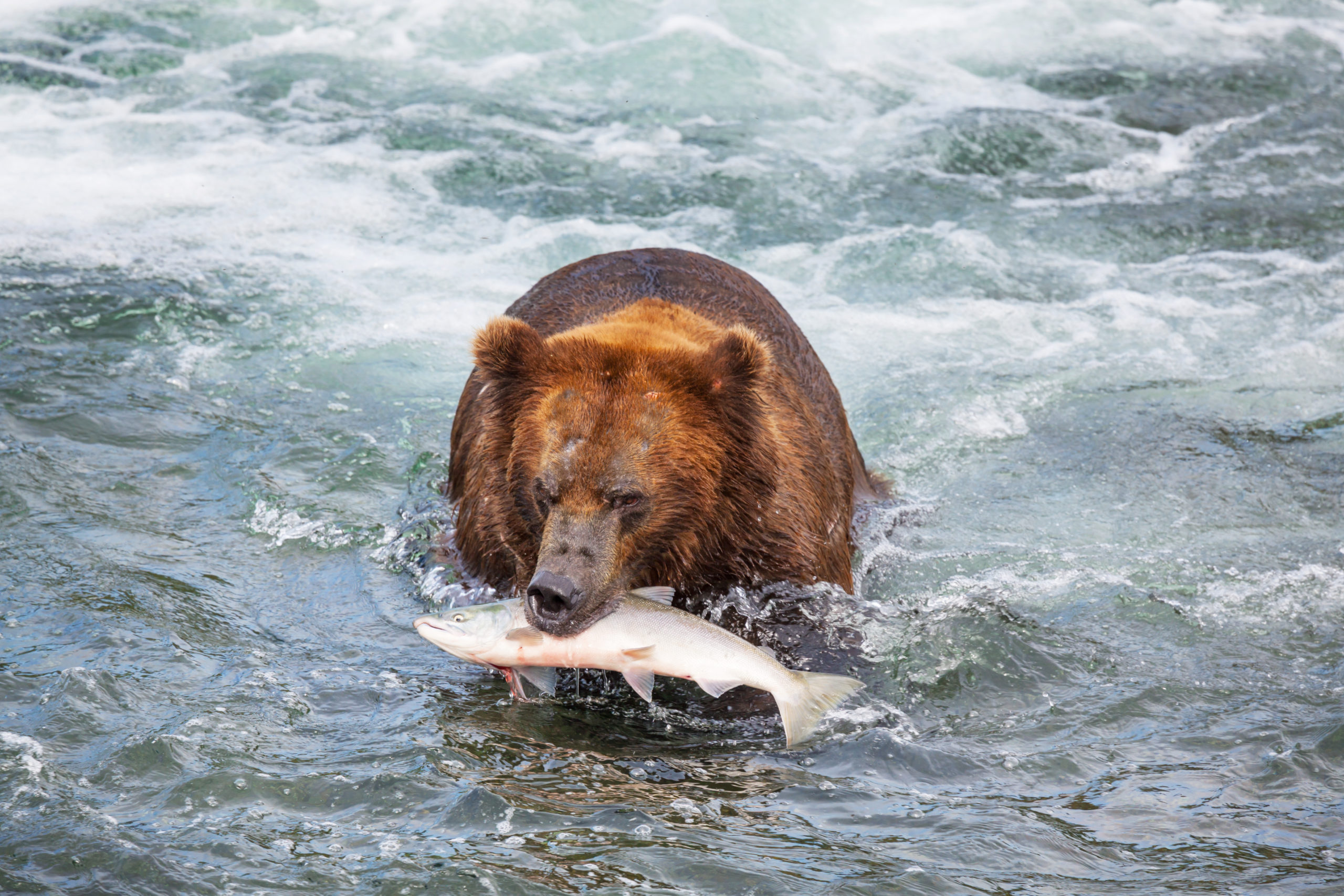
Outside their meat diet, a grizzly diet consists largely of various huckleberries, blackberries and other plants. If you've ever visited a National Park or lands maintained by the U.S. Fish and Wildlife Service, you likely noticed the bear-proof trash cans and strict rules about feeding the bears, especially in parts of Montana and Wyoming. It is because they'll scavenge through and gorge themselves on everything from a leftover piece of pizza to the remains of that salad you had for lunch.
Obviously, U.S. Fish and Wildlife and the NPS want to limit that from happening because it leads to unwanted human/bear encounters, but one thing is for sure, no one accused a grizzly bear of being a picky eater!
Do grizzly bears eat people?
We should address this popular question while we're still talking about the animal's diet. The short answer is yes, grizzly bears have eaten people before. However, these incidents are exceedingly rare. Most grizzly attacks. Like the famous Hugh Glass incident that inspired the movie "The Revenant," are rare. In most cases, these attacks aren't predatory, but are self-defense from a bear that has been startled up close. That's why you'll see many hikers using bear bells to make noise while they're hiking. The bear will hear that and know the sound is unnatural.
In most instances, grizzly bear attacks are sows defending their young, which is why it is wise to back out of an area slowly if you see cubs. It is likely the mother isn't far away.
Attacks with the intent of feeding are rarest of all. One of the more notable ones is the infamous Timothy Treadwell incident in Alaska's Katamai National Park back in 2003. Treadwell and his girlfriend Amie Hugenenard were attacked, killed and partially eaten by two grizzlies while camping.
Treadwell often told reporters and TV hosts he was there to educate people about an endangered species during the 13 years he spent documenting the animals, but the NPS said his behavior was reckless. He often got within only a few feet of the animals while filming. The NPS frequently handed him citations for not camping in designated areas and for improperly storing food. The incident is unfortunate, but is often also cited as an example of what NOT to do while staying in bear country.
How fast can a grizzly bear run?

In almost every wilderness or survival movie, there is, without fail, a run-in with a bear. These scenes almost always end with the person running and just barely scaling up a tree or getting into a small cave. However, as is often the case, these scenes are incredibly unrealistic. Most people would be bear chow if these scenes were real.
That is because a grizzly bear can run at speeds of up to 35 miles per hour. You can't outrun it and no, it doesn't matter if you're running uphill, downhill or whatever. Those are just urban legends.
To put things into perspective, consider eight-time Olympic gold medalist sprinter Usain Bolt, the fastest human alive. Bolt was once clocked as hitting a top speed of 25.71 miles per hour. That is insanely fast for a human, but still not fast enough to outrun a grizzly. If the world's fastest human couldn't outrun a bear, well, we hate to say it, but you won't be able to either.
How much does a grizzly bear weigh?
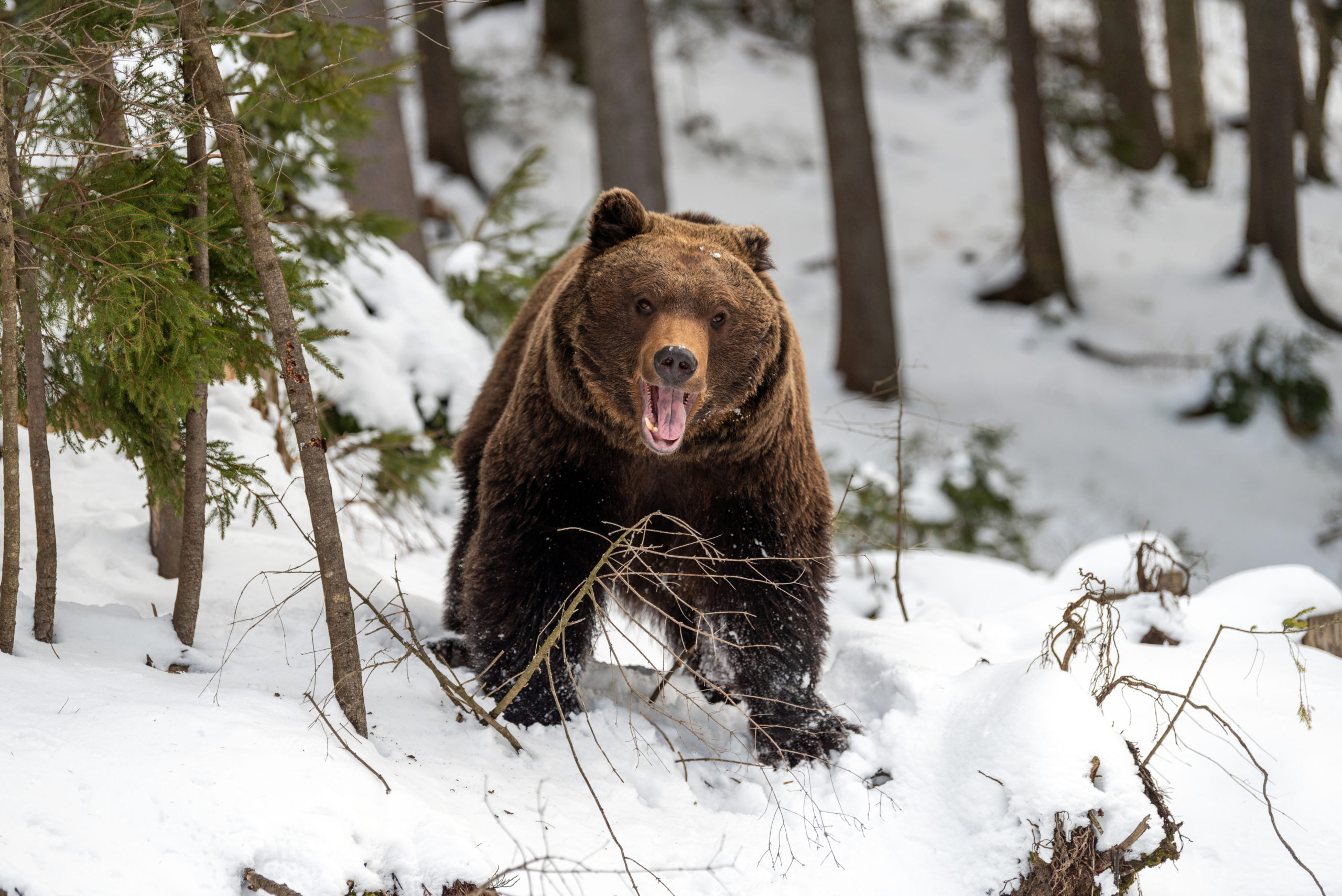
The grizzly bear is nowhere near the largest bruin on earth. That honor goes to the polar bear, which can reach weights over 2,000 pounds. However, the grizzly is not far behind when it comes to size. Male grizzlies typically grow larger than the females.
At their largest, it isn't uncommon for male grizzlies to top 1,000 pounds. Some of the largest ever recorded have gotten near the 1,700-pound mark. Sow grizzlies top out at a smaller, but still incredibly intimidating 700-800 pounds. To put into better perspective how big this is, larger specimens may stand nearly five feet tall at the shoulder and over nine feet when standing on their hind legs!
The world record grizzly bear skull, as recognized by Boone and Crockett, was picked up Lone Mountain, Alaska back in 1976. The animal was already dead, so we can only speculate to its height and weight, but it had to be massive. The skull of that animal was a staggering 17 4/16 inches long by 10 9/16 inches wide. That's a huge head!
Are grizzly bears endangered?
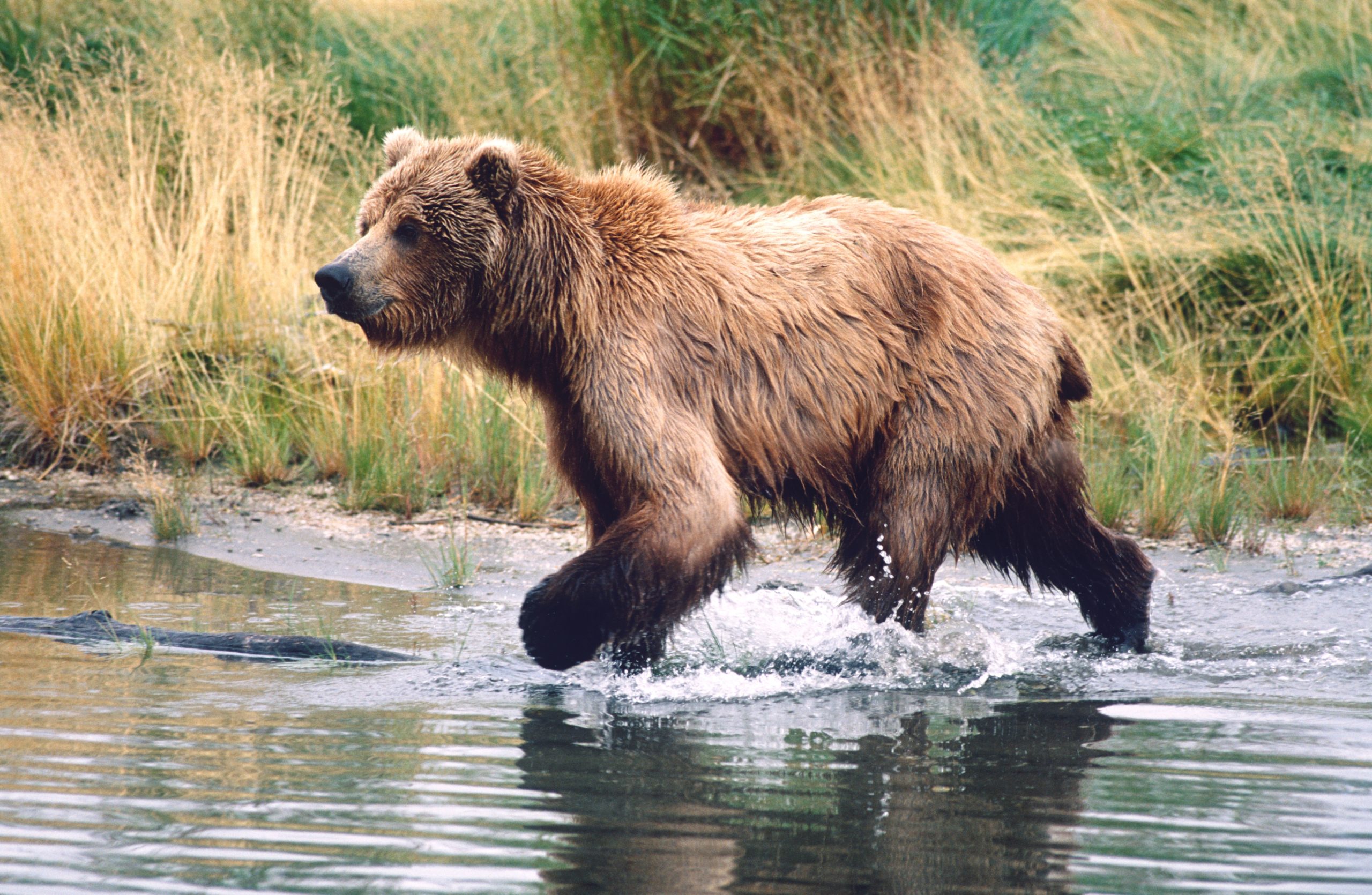
The status of grizzly bears is highly controversial in most areas where they are found. Technically, the International Union for Conservation of Nature lists the animals under their "least concern" category and the population is listed as "stable." However, due to habitat loss, the animal is still protected under the endangered species act in some areas.
One of those places is the greater Yellowstone ecosystem, where the animals have made a spectacular comeback. The Yellowstone grizzly bears are now a common sight for tourists every summer. In 2015, I was visiting in the park in July when one showed up a few hundred yards off the road in Hayden Valley. The one bear caused a traffic backup nearly a mile long as hundreds of tourists stopped for a look! That's just an example of the appreciation people have for these animals now. Grizzlies have been so successful that lawmakers and even state wildlife agencies have started to support hunting seasons being opened for them. It's a hot-button issue in Wyoming with hunters, farmers, state agencies and animal rights activists constantly butting heads with differing opinions.
It should be noted that some states like Alaska, already have grizzly bear hunting in place. Some areas, due to public pressure, have eliminated hunting completely. That was what happened in British Columbia back in 2017.
For now, it doesn't seem like the grizzly bear will be going extinct anytime soon due to conservation efforts and increased public education about the species. However, we expect the legal battles and debates over the species to continue in the courts for a while.
For more outdoor content from Travis Smola, be sure to follow him on Twitter and check out his Geocaching and Outdoors with Travis YouTube channels.
NEXT: GRIZZLY BEAR OUTSMARTS ELECTRIFIED BAIT CONTRAPTION
WATCH
